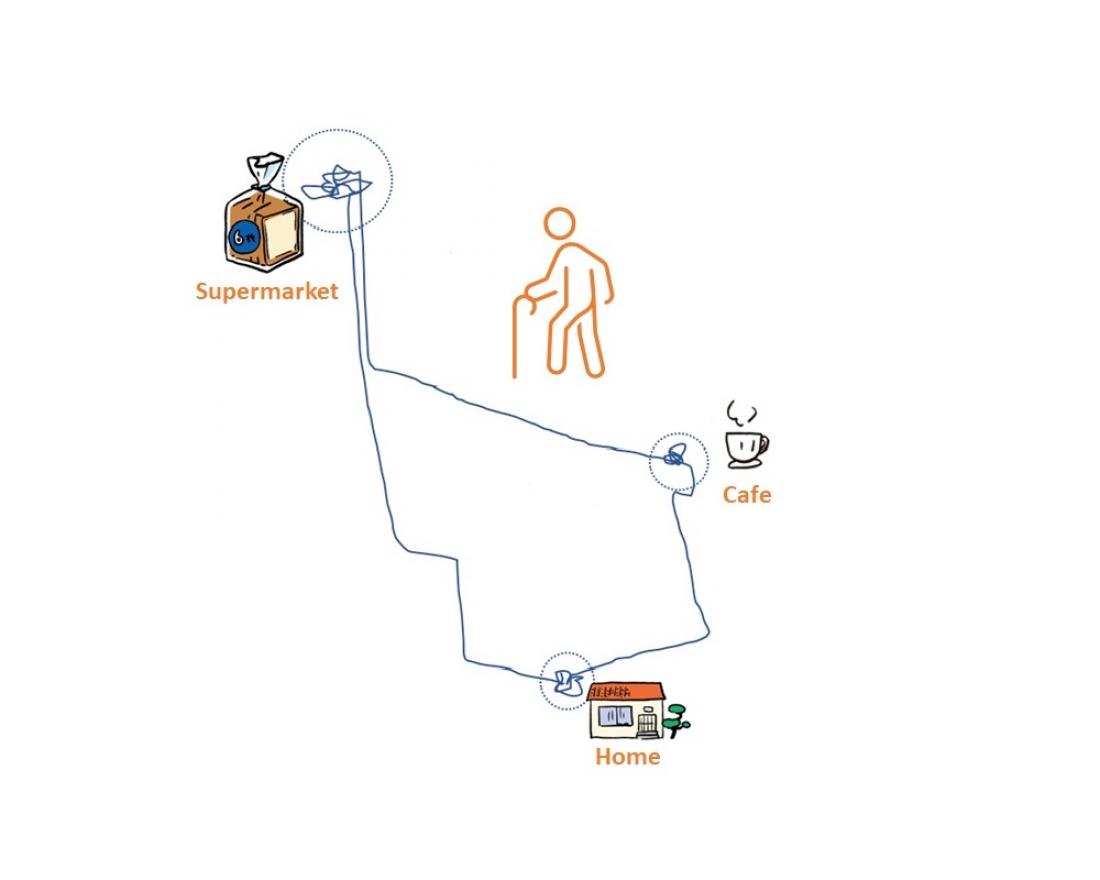Image of the measurement of out-of-home behavior based on the GPS tracking data: Using a GPS sensor and accelerometers, the scientists found that the amounts of physical activity among the elderly participants were more strongly influenced by the number of visited places (nodes) than by the amount of out-of-home time. This study did not investigate the purpose of going out or the means of transportation.
Visiting more than one supermarket for possible discounts might not only be budget-friendly but also health-friendly. Using GPS and accelerometers, scientists from Osaka Metropolitan University found that amounts of physical activity — including exercise, sports, and everyday physical errands — were more strongly influenced by the number of visited places than by out-of-home time among the elderly participants in their cross-sectional study. The results suggest the number of places visited as a potentially important factor when encouraging outings among the elderly for a healthier life. Their findings were published in Geriatric Nursing.
While the importance of going out of one’s home for health promotion has been acknowledged, existing studies evaluating out-of-home behavior were often self-reporting, making them rather subjective. Even when out-of-home behavior was objectively measured by GPS, only a single indicator, namely out-of-home time, was analyzed.
A research group led by Associate Professor Kazuki Uemura of the Graduate School of Rehabilitation Science, Osaka Metropolitan University conducted a cross-sectional study over 14 days, using a GPS sensor and accelerometers on 133 community-dwelling elderly people (48 men and 85 women, with an average age of 73.1) living in rural Toyama Prefecture. The researchers delved into the relationship between out-of-home behavior and amounts of physical activity.
The analysis showed that the average out-of-home time per day was 3.5 hours, the average daily number of visited places (nodes) was 2.5, and an increase of one in the number of places visited was equivalent to an increase of 1,324 steps and 0.05 in physical activity level. Both the out-of-home time and the number of places visited were positively correlated with daily step count. However, results of regression analysis that adjusted for age, sex, years of education, Body Mass Index (BMI), Mini-Mental State Examination (MMSE), and gait speed, showed that only the number of places visited was significantly associated with the amounts of physical activity (step count and physical activity level), whereas no significant relationship was observed between the latter and the out-of-home time.
This study did not investigate the purpose of going out or the means of transportation; 91% of the participants drive a car in their daily lives. Even if they were driving during the research period, it is expected that the accumulation of activities outside the home, such as at supermarkets and public facilities, would have led to an increase in physical activity.
“While it is clear that going out is beneficial for physical and mental health in old age, this study showed that visiting more places is associated with more physical activity than simply going out for longer periods of time," concluded Professor Uemura. “Therefore, it is important to evaluate and intervene from the perspective of diversity of out-of-home behavior instead of just saying ‘Let’s go out! Let’s have a walk!’”
###
About OMU
Osaka Metropolitan University is a new public university established by a merger between Osaka City University and Osaka Prefecture University in April 2022. For more science news, see https://www.upc-osaka.ac.jp/new-univ/en-research/, and follow @OsakaMetUniv_en, or search #OMUScience.



